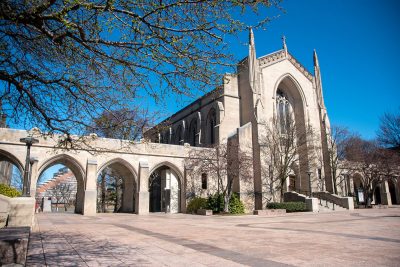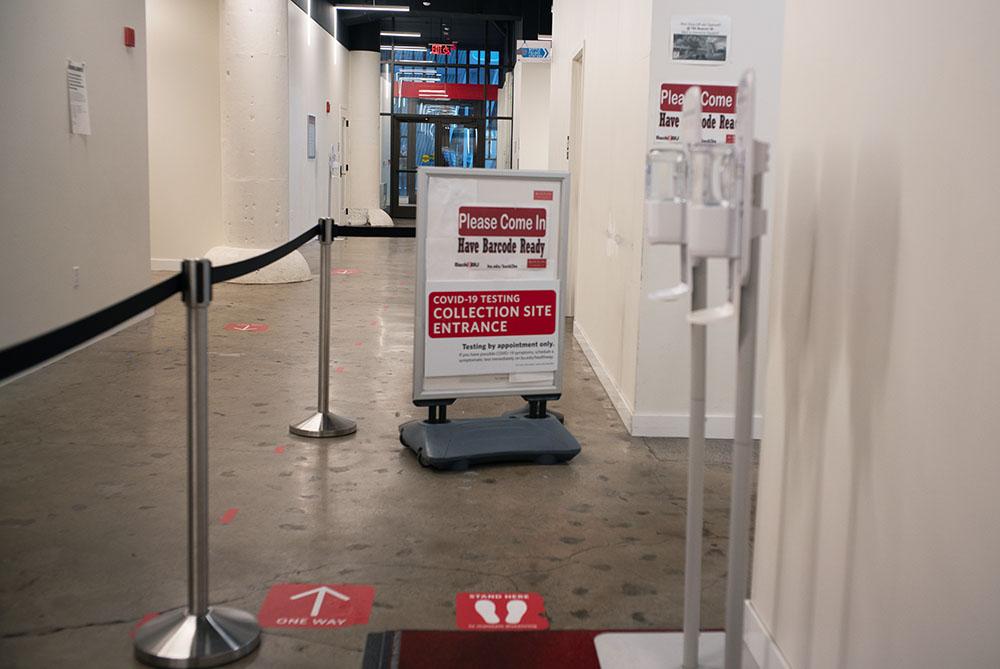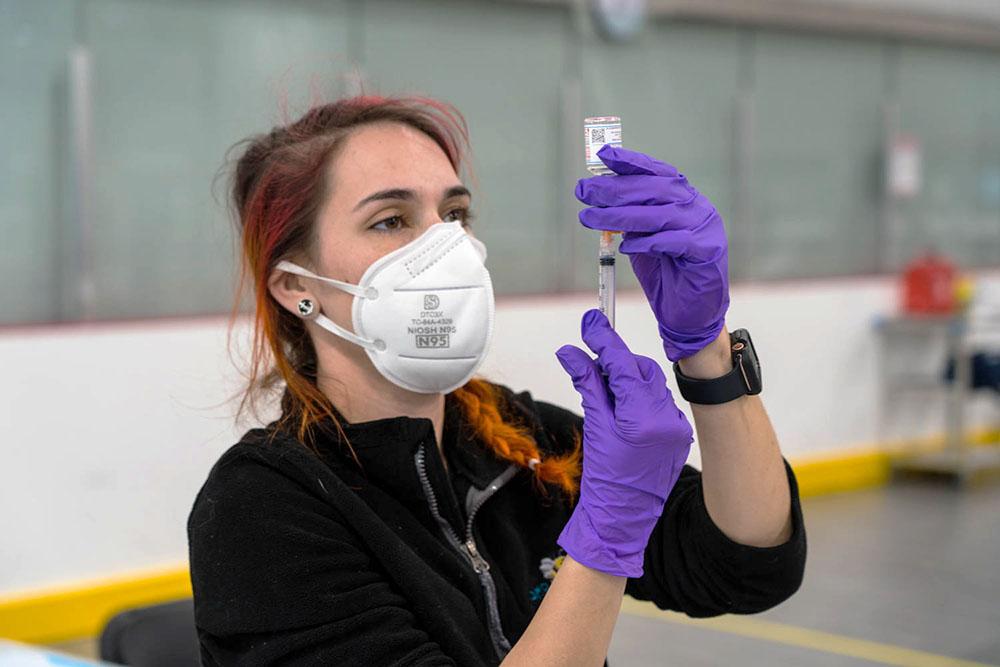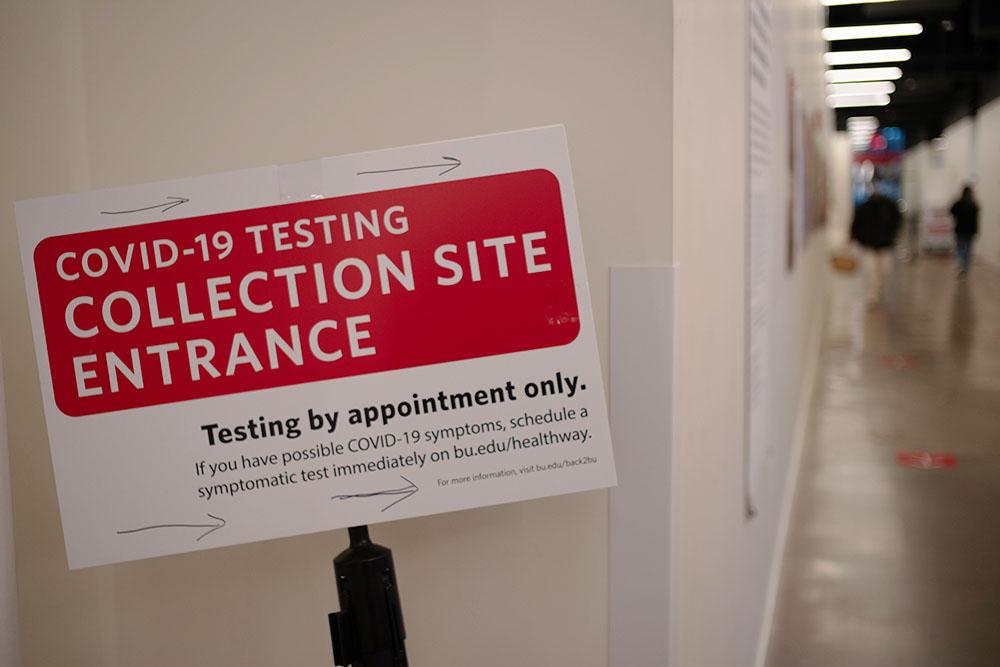
After months of uncertainty, Boston University released a new hybrid learning option for the Fall semester that would allow students to choose their own educational experience.
Should the proposed “Learn from Anywhere” plan go into effect, students can choose to return to campus with a combination of digital and in-person classes or continue remote learning from their place of choice, according to BU spokesperson Colin Riley.
Riley wrote in an email that on-campus learners would be divided into “platoons,” or “segment[s] of a large class that would rotate for in-person classes on a regular basis.”
Students would also have the opportunity to return to campus later in the semester or leave at any time, but how exactly that will play out in terms of housing, Riley wrote, is still being discussed.
The hybrid format offers flexibility, Riley later said, while still ensuring educational continuity for the student population who may be facing varied concerns including travel restrictions or health conditions.
“It’s all going to be a personal decision,” Riley said. “That’s why we’ll offer the flexibility of Learn from Anywhere so that students have the option to learn from anywhere, if they choose to do so.”
Though BU has presented this new learning option, there are still details left unclear, including Housing and Dining options, which Riley said will be addressed at a later date.
“Public health guidance is informing our plans for housing in the fall,” Riley wrote, “which also will depend on the decisions/choices students make with regard to LfA.”
For BU, Riley said, the ultimate goal is to ensure the safety and wellbeing of students, faculty, staff and visitors.
Katherine Cornetta, assistant to the Dean of Students, wrote in an email that Student Activities is currently working on a “playbook” for how student organizations will operate in the Fall that should be released at the end of June or early July.
“Much on student organization gatherings won’t be known until we know what recovery phase Boston and the Commonwealth is in when the semester begins,” Cornetta wrote. “For example, if gyms and recreational facilities are still closed at that point, then there might not be a way to have a club sports practice and/or dance rehearsal.”
University administration, according to Cornetta, hopes to provide student organizations with suggestions on how to operate bigger meetings given social distancing protocol.
“Would it make sense to set up a few more video conferencing spaces in the [George Sherman Union] and then encourage an organization e-board to run their group meetings from those spaces and broadcast on Zoom to their members across the campus or wherever they may be?” Cornetta wrote.
Phase two of the four-phase Back2BU reopening plan, “Campus Life,” was set to release Monday, Cornetta wrote. However, she wrote the release was postponed due to recent national protests.
Other campus organizations are also making appropriate plans with regard to reopening in the Fall.
Educational Resource Center Director Glenn Wrigley wrote in an email that the transition to remote services went smoothly in the Spring and that any decisions moving forward will be made in close cooperation with university leadership.
“The ERC will take every precaution to ensure the safety of the students that utilize our services,” Wrigley wrote. “Though we miss the face-to-face interactions with students, meeting students online via Zoom is the next best option given the social distancing guidelines we’re all trying to adhere to.”
Last week, BU also announced plans to establish its own testing site on campus. The plan includes self-sampling, a new lab and robots, all of which will contribute to creating a safe space for the University population.
Catherine Klapperich, professor of biomedical engineering in the College of Engineering and the founding director of BU’s Precision Diagnostics Center, will be leading the University’s COVID-19 testing lab. While the testing lab is not a standalone solution, she said it will hopefully reassure those who may return in the Fall.
“We’re hoping it would give people confidence knowing what their test results are in a frequent way,” Klapperich said, “so that they can protect themselves and know that people around them are getting tested.”
Further details regarding the testing lab are being developed, including the site location and testing method. Klapperich said the coronavirus test can currently be administered via nasal swab or spit samples and she would like to find out which option students prefer.
Klapperich added that students can expect to securely access their testing information by logging into an app.
“Most people will test negative, so most people will get back the results on that app,” Klapperich said. “It’ll be a little bit different if someone tests positive because they’ll get a call pretty quickly from Student Health telling them what to do next to make sure that their health is taken care of.”
Jo Nichols, a rising junior in the College of Arts and Sciences, said they think LfA is an interesting approach.
“I had talked to a few professors who, at the end of Spring semester, had kind of been hinting that there was going to be this hybrid situation,” Nichols said. “I think it’s as much of a mixed bag as it can be in terms of positive and negative effects for students.”
For Nichols, a big issue is lack of communication from the University. Compared to the various student leaders and organizations who have stepped up, Nichols described the absence of conversation from University officials as “dangerous.”
“The one form of communication that really stands out to me in my memory is that one email that we got from Dean [Kenneth] Elmore really early on when he was extending some sort of like message of care and support for students,” Nichols said. “I feel like there’s been a comparatively noticeable lack of engagement from higher up department heads, higher up faculty and staff, from the University themselves.”
Taskia Amin, an incoming freshman in the Metropolitan College, wrote in an email that as an international student, being able to study from home will be a relief.
“To be honest I’m really excited because not many other universities offer a possibility to still host an in-class experience after this outbreak,” Amin wrote. “[BU is] constructing the programs to be accessible and equally functional for whichever method we choose to conduct our studies.”
Rudy Meyer, a rising junior in the College of Communication, said he was disappointed with the release of the plan and wanted to see BU make more of a decision.
“They’re kind of saying they want to have it both ways, which is that they want to be able to have people be away if they need to, but they want to have students on campus,” Meyer said. “For me, that was kind of frustrating to see that they made more of a non-decision than anything.”
An important factor in BU’s decision, Meyer said, should be its location in the heart of Boston.
“BU is an anchor institution… that can’t be moved. They are where they are, and they have a large impact on the community around them,” Meyer said. “They have a responsibility to look at what’s best not for them, but for the community because they are just as much a part of that community as everyone else.
Noah Lapid, a rising COM sophomore, said he expects to hear more details from the University before making a decision on whether to return in the Fall or not.
“I would definitely prefer to go back on campus,” Lapid said. “But I would need to hear more about their testing plan, or how they plan to manage the crowds at dining halls and dorms and stuff. That would impact my decision more than the classroom stuff.”
Melissa Ellin contributed to the reporting of this article.






















































































































Agostino Rancatore • Jun 8, 2020 at 10:50 am
What information does BU’s Health Service have on Covid 19 infections at the university?